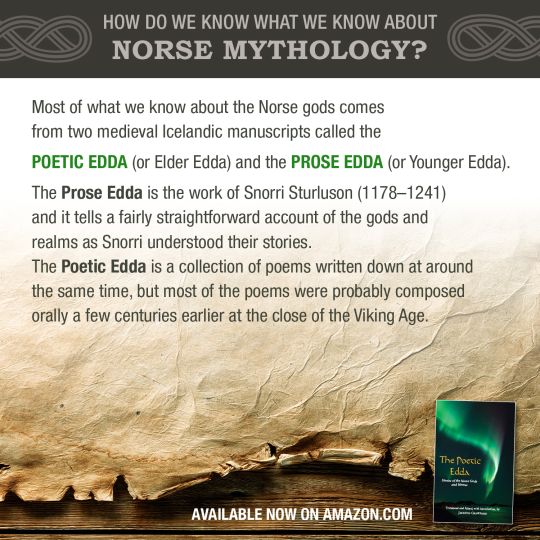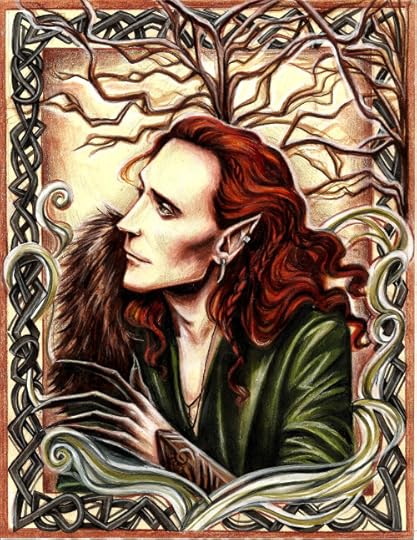C. Gockel's Blog, page 44
September 24, 2015
cgockel:
So I wrote a story about Sigyn, Loki’s wife, being...

So I wrote a story about Sigyn, Loki’s wife, being BAMF. It’s part of the Nightshade anthology and it is now almost #100 on all of Amazon. That’s bestsellerdom! It’s only 99¢ until the 29th. Besides me there are 17 other NY Times and USA Today bestselling authors with original short stories. Get it, get it now … Amazon, Nook, Kobo, GooglePlay, and iBooks
fostersxn:
helshades:
a-geek-for-all-seasons:
helshades:
anna...






#you know thor is gonna go throw his room all ‘I USED TO HAVE ONE!’ just so he can give it to jane so she can take apart #maybe he can’t find out and asks volstagg for one bc his kids have 300 #but also!!! THAT SOMETHING AS SIMPLE AS AN ASGARDIAN BALL IS SO ADVANCED #and jane finds such wonder in it #and even when she realised that it’s ball it doesn’t take away from it #and thor doesn’t mock her for it #he thinks it’s cute #he’s definitely gonna find that ball #he’s sure he had one #maybe he broke it
Yeah, I can’t resist to reblog just to remind everybody that Thor fell for Jane Foster in the first place because she was so damn clever, and curious, and passionate about her work, and obstinate, and he was impressed and amazed and so touched to see the humans more resourceful than he thought and hey, here is another bit of Thor’s personality, he’s just so happy to have been proven wrong now that it allows him to see the best in people—
I just fail to understand why so many would dislike Jane Foster, and even more erase her character from their works; she is absolutely marvellous, both unbelievable and terribly realistic, adorable and awkward, driven but sweet, kind but relentless, and so fucking gifted. And there are people wondering why Thor is interested in her?! Argh!
Also this scene is quite wonderful: you have two people who had a crush on each other last time they met, but who have been unable to see each other since, and the current events are hardly allowing them to get to know each other better—and they kinda find themselves in the same situation they were last time, and you see how they reconnect and it’s just perfect. Perfectly untimely and a little bit tragic, too.
You see; this, this right here, is why I like them together. Jane is utterly fascinated by this child’s toy and Thor thinks that’s amazing. How someone could find wonder in something that he probably takes for granted. This relationship doesn’t get nearly enough love in this fandom, because people are to busy hating on the female character that the main character loves. And I really don’t understand that. I think that, originally, Jane was sort of meant to be the audience substitute. The person who asks all the questions that the audience might have about the world that Thor inhabits. But the cool part about Jane is that she’s more than that. She’s the kind of scientist who finds the universe an endlessly fascinating place, and all the things that she’s encountered through her relationship with Thor has opened her up to possibilities that no one on Earth has ever even dreamed of.
TL;DR: Jane is one awesome Science Lady and she deserves more respect for that.
Not only is Jane the audience’s substitute, but she is the audience’s clever and curious substitute, something practically unheard of in a fantasy or sci-fi blockbuster; usually the role of the audience’s viewpoint is filled in by a male character who ends up being the saviour of the indigenous species, thanks to all his Earthly knowledge.
Jane is both characteristically human and extraordinarily curious, filled with joy at the prospect of learning something new. She doesn’t dread the unknown, she sees an opportunity to learn more about the world. This is so very precious, so damn positive. And the best thing is that it still feels completely effortless. People who claim she doesn’t have a personality clearly haven’t seen the same movies I have.
Perhaps not so strangely, Thor and Jane’s relationship when it comes to science reminds me of the best hours of Doctor Who, where an old and learned character from a terribly advanced civilisation took an evident pleasure in getting to see the universe anew through the virgin eyes of curious and eager companions.
Thor himself is a formidable and deep character, because he obviously loves to learn as well. He adapts incredibly quickly, and he’s all ready to transform a prejudice into a life lesson. You can visibly see that what attracts him in Jane is her strength, her strengths, and certainly not the prospect of hovering over a frail and tiny human. When he looks at her, he doesn’t see tiny, he doesn’t see petty and ignorant; on the contrary, he sees greatness in mind and in potential.
This is such an unusual way of portraying romantic relationships, you have no idea. It makes me so angry to see people in the fandom retort that Jane is no role model for them because she’s too good, or because she’s not Asgardian, or because she’s not Loki. She is both exceptional and so laughably, so warmly human—typically human, but without the mandatory arrogance that clings to male characters in similar situations.
#Foster’s Fellows indeed.
*hugs all of you*
ladyalexanderforasgard:
Lady Sif Edits 4/ ?
No reason.
lemonschweetz:
This made me so happy. Never give up and follow...

This made me so happy. Never give up and follow your dreams.
Awww … I’m a fellow dyslexic … probably ADHD too, but we didn’t have names for it when I was growing up. My third grade teacher just diagnosed me as “stupid,” loudly and to the class. Wouldn’t have made it without my imaginary world and pictures to escape into.
September 23, 2015
Stories from the North: An Interview with Jackson Crawford
Compiled by a-north-wind-rises
Now a faculty member of the University of California, Berkeley in the
Department of Scandinavian, Dr. Crawford’s expertise lies in Scandinavian
languages and their history. His background includes: three years
spent at UCLA teaching undergraduate- and graduate level-courses in
Scandinavian Studies; writing the spoken Old Norse and the runes present in
Disney’s Frozen; and multiple publications of original research in
both Norwegian and English, one of which is a new translation of The Poetic Edda. He also
earned his PhD. in Scandinavian Studies from the University of Wisconsin
-Madison, and his M.A. in Linguistics from the University of Georgia.
I had a chance to speak with Dr. Crawford about Norse myth,
the figures which populate it, and his own work with it.

Credit: Karen E.
Why did you decide to create a new translation of the
Poetic Edda?
I translated the Poetic Edda while I taught at UCLA (2011-14) for my
students, who, more often than not, were STEM majors not very interested in
poetry and were taking a class like Norse Myth or Vikings to satisfy a
degree requirement in social science or literature. These students were
interested in the Poetic Edda’s stories of the Norse gods and heroes, but
they often had a difficult time enjoying existing translations, which all
use archaic and/or very florid English to a greater or lesser extent
(Friends and family had often made this same complaint to me when I
recommended they read the Poetic Edda for themselves). It was very time
-consuming to have to explain what the translations meant, so I decided to
make a translation of my own, aimed at undergraduates and general readers
outside the university who want to know what these stories say without
being distracted by unusual English words and phrases. And rather than
stick to the poetic style of the original, which would have forced me to
use some unnatural English, I translated it into a type of unrhyming but
rhythmic verse inspired by my favorite American poets.
When
reading stories from the Poetic Edda or other sources of Norse mythology,
what should readers clue into to learn more about Norse culture? (An
example is the class system discovered in the Rigsthula.)
Some of
the cultural traits I encourage my students to keep their eyes out for
include the almost obsessive fixation on hospitality and good guest/host
relations (including the importance of gifts), the celebration of reckless
courage against overwhelming odds, and the ethical system focused around
the honor and shame of a family rather than the virtues and sins of an
individual.
What purpose did the “info-dump” myths serve?
(Grimnismal, etc.)
Originally these poems might have been
mnemonic devices for composers of skaldic poetry, designed to help the
reciter remember names from the mythology that could be “mined” to create
kennings for their elaborate skaldic poems.
As far as eccentric
creatures in Norse myth go, Slepinir’s birth and existence seems to be
fairly unique. Is there some lesser known information that can shed some
light Slepinir’s function in Norse mythology?
Sleipnir is gray,
which is a color often associated with magic in Norse literature (and with
Odin specifically), and he is the father of the human hero Sigurth’s horse,
Grani. Horses were a status symbol in medieval Scandinavia, expensive to
own (as they are today) and there is a great deal of evidence of the
sacrifice of horses at important festivals and funerals. So it is not
surprising that this aristocratic animal is associated with Odin (while the
more middle-class Thor rides a chariot pulled by goats). It is possible
that the tradition of Sleipnir having eight legs is related to an art motif
, seen in medieval Scandinavia, that shows horses with more than the normal
number of legs as an indication of their speed. On the other hand, Sleipnir
is the son of a giant’s horse, and giants, trolls, and other unnatural
creatures are often depicted as having unusual numbers of body parts.
What are the cultural origins of the Vanir? They seem to be of a
different pantheon completely, in some regards. Could the Aesir/Vanir
relationship be explained by the Indo-European and pre-Indo-European
relationship in Bronze Age Scandinavia? Do the Aesir/Vanir differ in looks
/ability in any significant fashion?
There are a lot of words for
the gods in Old Norse (Æsir, Vanir, regin, goð, tívar, just to name the
first that come to mind), and in Old Norse poems, the choice of which one
to use is often conditioned by what the poet needs to the word to alliterat
e with. That being said, most of the times when the term ‘Vanir’ is used in
the Poetic Edda, it is in alliteration with other words, and in that case
it may simply be a synonym for “gods” on the whole, chosen as a convenient
alliteration. This may have caused us (and Snorri before us) to overestimat
e how big of a difference there is between the Aesir and the Vanir–in fact
Rudolf Simek has argued that the Vanir weren’t even considered a separate
group of gods till Snorri misinterpreted them as such. If the distinction
is valid (and in my translation I have followed the tradition of observing
it), the Vanir do seem to be treated as slightly subordinate to the Aesir
since both Njorth and Frey marry “down” to giants (to Skathi and Gerth,
respectively) and not to goddesses of Asgard. The suggestion that the Vanir
represent a continuation of the gods of a conquered or assimilated non-Indo
-European people is interesting, but impossible to substantiate (and the
names of the Vanir, at least, can be explained with Indo-European etymologi
es), and while the roles of Njorth, Frey, and Freyja are associated with
the natural world and/or sexuality, this isn’t less true of the Aesir–Thor
has aspects of a nature god, and Odin is highly sexually active and rides a
stallion, emblematic of virility.

Credit: Karen E.
Since
the Norse gods are sometimes portrayed in a humorous fashion (i.e. Thor
dresses as a woman to trick a Jotunn that has hidden Mjolnir), were the
gods seen in a human way?
I think that in a monotheistic (or post
-monotheistic) culture we often forget that polytheism leaves a lot of room
for acknowledging the gods’ faults without jeopardizing their superior
status to human beings. A monotheistic god has, in a sense, a lot of
pressure to be perfect, since he has no one he interacts with at the same
level, whereas gods in polytheistic pantheons are members of families and
societies and can thus express many different shades (good and bad) of
their human equivalents. It also allows people to play favorites with their
gods and even practice henotheism (preferential worship of one god, while
acknowledging the existence of others). Thor, by far the most popular of
Norse gods, was fairly approachable and good-natured toward human beings,
and it’s not surprising that a popular, macho god could be played for
laughs when he’s forced to dress like a bride–I think it’s the same kind
of humor as seeing Arnold Schwarzenegger pregnant in Junior (i.e. the very
fact that it is so funny to see him in that role plays up his machismo; it
would be less funny if it were a less macho actor, or a less macho god like
Odin). Beyond just laughing at the gods occasionally, it’s also clear that
Odin, for example, was looked at with some distrust (see his portrayal in
Eddic poems like Lokasenna, Harbarthsljoth, or Helgakvitha Hundingsbana II
).
What could explain the fact that continental Germanic tribes
had the god of war Tiwaz/Tyr as the chief god while the Scandinavian tribes
had the god of magic Odin/Wotan instead?
It’s almost impossible
to say anything for certain about West Germanic tribes’ pre-Christian
religions, beyond the names of some gods. The idea that Tyr was pre-eminent
once among some or all Germanic peoples is based on deduction from scant
evidence such as the etymology of his name (which is cognate with e.g. Zeus
). But unfortunately we know next to nothing directly about West Germanic
religion. And, for that matter, the closest thing we have to direct
testimony, the Second Merseburg Charm, mentions Odin (Uuodan) but not Tyr
.
Is there anything linking the Greek/Roman pantheon(s) and the
Norse one(s)?
Ultimately both the Greeks and the Norse spoke Indo
-European languages, which stemmed from a common linguistic ancestor spoken
about 4,000 BC. There are some names that are cognate, i.e. from the same
ancestral name (the best and most famous example is that the names Zeus and
Tyr are both from the reconstructed name *Dyaus), and there are some
similarities in the structures of the stories told about the two cultures’
gods and heroes, but overall the two traditions evolved independently for
so long that they can’t be considered more than very distant cousins. On
the other hand, pre-Christian Russian myth appears to have had many
commonalities with Norse, including a figure very similar to Thor named
Perun (whose name is even cognate with Fjorgynn, which may be an ancient
name of Thor).
Are there any other legends of the forging of
famous weapons, other than Mjolnir?
The Prose Edda tells us that
the dwarves made Odin’s spear, Gungnir. The Eddic poem Reginsmal and the
Saga of the Volsungs tell of the forging of the sword Gram for the hero
Sigurth out of the fragments of his father Sigmund’s sword (which had been
given to him, and later shattered, by Odin). The mythical-heroic sagas also
have numerous famous swords, e.g. the sword Mimung made by the famous smith
Volund (who is featured in the Eddic poem Volundarkvitha).
What,
in your opinion, is the most trustworthy source for Norse mythology?
In any cohesive form, the Poetic Edda. Even though the manuscript dates
from around AD 1270 (270 years after the conversion of Iceland to Christian
ity), it is clearly a copy of an earlier manuscript (from ca. AD 1200), and
several of the poems have linguistic features that suggest they were
composed orally around 200 or even 300 years earlier than that. On a less
cohesive level, skaldic poems–which are very difficult poems composed in
the Viking Age or a little later, usually in praise of a king or hero–are
even more reliable sources of genuine pre-Christian belief when they happen
to mention myths, since skaldic poems can be dated very precisely and
anything that can be dated to a pre-Christian date of composition with
complete confidence is highly valuable.
Does Loki have an
identifying feature like Odin’s spear or Thor’s Mjolnir?
The
first thing that comes to mind are the scars on his lips from when they
were sewn together and subsequently ripped open, as told in the Prose Edda
.
Do you think it’s supposed to be ironic to have Tyr, who was
associated with the law, lose his right hand because of his unrightfulness
/dishonesty?
I don’t think it’s understood to be ironic–when the
other gods have tricked Fenrir into letting them put the unbreakable fetter
on him, Tyr is the only god who’s honest enough to agree to Fenrir’s
request that one of them put his hand in Fenrir’s mouth as a pledge that
this isn’t being done in bad faith. Tyr is involved in the duplicity, but
he seems to hate getting away with the deception, and he accepts the price
of the lie that the other gods get away with.
If we assume
Folkvangr is the alternative to Valhalla, then why do only half of the
fallen warriors on a battlefield get to go to Valhalla?
This is a
huge mystery. The hint that half the dead warriors go to Freyja in Folkvang
is from the Eddic poem Grimnismal (st. 14), but what she does with them
there is unknown. Since Grimnismal is the only source for that claim
(Snorri quotes it but doesn’t add anything to it), it is possible that this
was not as widespread a myth as that of Valhalla, as elsewhere it seems
like a given that dead warriors go to Valhalla, without the option of
Folkvang mentioned.
In working on your own translation of the
Poetic Edda, have there been any elements of the stories that have
surprised you? Any words or ideas in particular that were difficult to
translate into English?
The hardest individual word to translate
was “argr,” usually an insult for a man with strong overtones of cowardice
and homosexuality. I didn’t want to use a word that was too inflammatory in
English, or one that seemed either too old-fashioned or too effervescently
contemporary. I wound up going with “sissy,” but it’s not a perfect fit. As
to things that surprised me, I was surprised how much I enjoyed the three
Helgi poems. They had always been some of the hardest poems to understand
(whether in the original or in translation), but in translating them myself
I came to understand them better, and I hope my translation will help other
people enjoy them with better understanding, too.
What was the
method behind Star Wars as a Viking saga, and do you think it could work
with other historical styles and contemporary works of fiction?
I
wrote up Star Wars as an Icelandic saga in the period 2010-2012, when I was
a graduate student at the University of Wisconsin and then a faculty member
at UCLA. The original idea had been that I’d come to read Old Norse better
by writing something in it myself, but the story adapted so naturally to
the genre of Icelandic sagas that I felt compelled (off and on) to finish
it. A fair amount of it is lifted (lovingly) from actual sagas, especially
Egil’s Saga but also Volsunga Saga, Njal’s Saga, Laxd…alright from most
of them. Later on it took on a serious and personal edge of its own as I
shaped it into a story of a family torn apart by its own promises, a theme
not alien to the genre. I have also thought about other genre-bending
experiments (in a sense, my Cowboy Havamal is one). I’ve especially thought
about converting a saga to a western, and I’ve even started working on one
seriously once or twice. As someone pretty familiar with both genres, it’s
a pet project I’m likely to get back to one of these days, once I can
settle a few sticky plot and style issues, and if I’m persuaded that there
might be an audience for it.

Credit:
Jackson Crawford (Reprinted with permission from the author)
Dr. Crawford’s new translation of the Poetic Edda is available on
Amazon. He can also be found on Twitter @Norsebysw, and there is a Facebook page for his
translation for the Poetic Edda which can be found here.
September 22, 2015
"Back home we got a taxidermy man. He gonna have a heart attack when he see what I brung him."
- Óðinn, carrying home Mímir’s head, probably.
(via incorrectedda)
September 20, 2015
The new cover for Ragnarok: I Bring the Fire Part VI. Loki vowed...

The new cover for Ragnarok: I Bring the Fire Part VI.
Loki vowed Asgard would burn.
Bohdi Patel, latest incarnation of Chaos, wants nothing to do with Loki’s psychotic oath. Stranded on the icy world of Jotunheim with Amy Lewis, his friend Steve Rogers, and an unlikely band of civilians, magical beings, and elite military, Bohdi just wants to keep himself and his friends alive … but when you’re Chaos incarnate, even the simplest goals are complicated.
If Jotunheim doesn’t kill them, Odin will, and if Odin doesn’t, the secrets they harbor might.
In the final installment of I Bring the Fire, Bohdi, Amy, Steve, and their companions learn that Chaos cannot be contained, some secrets cannot be kept, and some vows cannot be broken.
Pick it up at Amazon, Nook, iBooks, GooglePlay, Kobo, or Smashwords.
And the first in the series is FREE! Get it at Amazon, iBooks, Nook, Kobo, Smashwords & Google Play.
September 19, 2015
Now back to...this bitch who didn’t invite me to his party. Ægir, what’s good?
September 18, 2015
ATOMIC: A new short story I’ve written staring Sigyn and Loki...

ATOMIC: A new short story I’ve written staring Sigyn and Loki will be available September 21st as part of the Nightshade Short Story Anthology. It will be 99¢ for just one week on Amazon, Nook, Kobo, GooglePlay, and iBooks.
Other authors in the set are: Donna Augustine, Annie Bellet, Sarra Cannon, Selene Charles, Deanna Chase, Kate Danley, Debra Dunbar, Hailey Edwards, Colleen Gleason, Helen Harper, Shawntelle Madison, Christine Pope, SM Reine, Anthea Sharp, Colleen Vanderlinden, Phaendra Weldon … basically, a whole bunch of NY Times, USA Today best-selling authors (and Hugo nominees), and me.
Atomic takes place before I Bring the Fire Part I: Wolves … Here’s an exclusive excerpt:
Sigyn
is prophesied to be the consort of a king. Instead she marries a
fool. Centuries after his chaos destroys their marriage, the fallout
begins …
Chapter 1
Sigyn
’
s
grandmother had stopped eating the youth-bestowing apples of Idunn
decades ago. Her fingers are papery with age when they grip Sigyn
’
s
chin.
“Look up at me, child.”
Sigyn
cranes her neck to meet her grandmother’s
eyes, so high above her own.Grandmother’s
gaze is foggy, but her smile is sharp. “Oh, it might have been
worth living to see you grow. Sigyn… Victory Woman, it means.
You’ll
find yourself consort to a man of great power.” Grandmother lowers
her head so her eyes are level with Sigyn’s.
“A king maker you’ll
be, Girl. A king maker.”
***
“Mama,
it hurts! It hurts!” The language of the prayers is Japanese,
and those words are the only ones discernible in the cacophony of
cries of terror, pain, and loneliness crowding Sigyn’s
head, or more accurately, her heart. Covering her ears would do
nothing to stop the psychic roar. Only moments ago she’d
been in Asgard, realm of those once worshipped as gods, beneath a
golden sun and a crystalline blue sky. Now on Earth, in the city the
prayers have summoned her to, the sky is choked with soot and smoke,
the ground beneath her sizzles, and a wall of fire rings the eerily
circular plane she’s
standing on. Strangely, she feels an overabundance of free particles
in the breeze. She is a magical being, and has more natural
resistance to radiation than a human, but if she weren’t
wearing armor, she thinks it would be too much for her.
“My
God, what have we done?” This prayer is in English, and the
accent sounds American.
“It
hurts! It hurts!” rises in
Japanese, above the wordless chorus.
She
blinks. She must be in Japan. Sigyn turns, and something crackles
beneath her feet. Looking down, her jaw drops. A thin crust of glass
covers the sandy soil. Lifting her gaze, she sees a dome stripped of
everything but twisted and charred steel supports. She’s
on a battlefield, obviously. But where are the wounded …
and the corpses?
Concentrating,
she sends a magical apparition beyond the fiery ring, a trick learned
from her ex-husband. A few meters away, her doppelgänger
sees a reverse shadow on a stone wall that looks like the silhouette
of a woman and child. Sigyn’s
apparition moves on and sees a few more such shadows; and then an
amorphous shape on the ground catches her eye. As she approaches,
realization hits Sigyn swift and hard. Her concentration breaks and
her consciousness snaps back into her body. She vomits, but she can’t
expel the memory of melted eyes and skin sliding from a corpse.
Body
bent, she blinks as ash falls around her like snow. What is she doing
here? It is said that prayers are only heard when they relate to a
magical being’s
higher purpose. Although her skill with burns is better than most,
the burns she saw are beyond the skill of any Asgardian.
Wiping
her mouth, she picks a direction at random and moves toward the
flames. Her armor is enough to protect her, and she is determined to
find her purpose. Before she reaches the fire, the voices in her head
become a wail that splits her eardrums and her skin burns with such
intensity it feels like it’s
bubbling from within. With a cry, she stumbles back to the center of
the crater. The prayers immediately become a murmur and her skin is
cool again. Peeling back a piece of her armor, she finds her skin
unmarred. It is a phantom pain related to the magical summons in her
head.
“Please,
don’t
let me lose him in Japan,” she hears in English, and in
Japanese she hears, “Water! Please water.”
She
exhales in frustration. Obviously, she’s
supposed to stay here for a purpose, but what? Canting her head, she
listens to the swell of prayers, the roar of flames, and the buzz of
radiation. And then, above it all, she hears a hiccup, not ten paces
behind her. She feels the sort of flickering magic she associates
with one person.
Rubbing
the bridge of her nose, she turns and finds whom she expects: Loki,
the so-called God of Mischief and Lies, legendary drunk, the King of
Asgard’s
fool, and her ex-husband.
… To Read More Pick up Nightshade for only 99¢ at your retailer of choice: Amazon, Nook, Kobo, GooglePlay, and iBooks
And if you absolutely can’t wait until the 21st, I Bring the Fire Part I Wolves, the first part of my Loki series is FREE and available just about everywhere for everyone (much like Loki): Amazon, iBooks, Nook, Kobo, Smashwords & Google Play.
September 14, 2015
muirin007:
“ Sá er enn talðr með ásum, er sumir kalla rógbera...

“ Sá er enn talðr með ásum, er sumir kalla rógbera ásanna ok frumkveða flærðanna ok vömm allra goða ok manna. Sá er nefndr Loki eða Loftr […]. Loki er fríðr ok fagr sýnum, illr í skaplyndi, mjök fjölbreytinn at háttum. Hann hafði þá speki um fram aðra menn, er slægð heitir, ok vélar til allra hluta. Hann kom ásum jafnan í fullt vandræði, ok oft leysti hann þá með vélræðum.”
“Also numbered among the Æsir is he whom some call the mischief-monger of the Æsir, and the first father of falsehoods, and blemish of all gods and men: he is named Loki or Loptr […]. Loki is beautiful and comely to look upon, evil in spirit., very fickle in habit. He surpassed other men in that wisdom which is called ‘sleight,’ and had artifices for all occasions; he would ever bring the Æsir into great hardships, and then get them out with crafty counsel.”
~Gylfaginning, from the Prose Edda.





